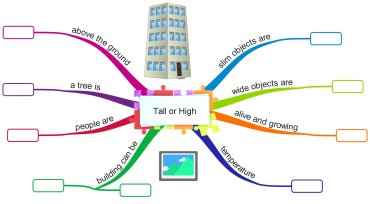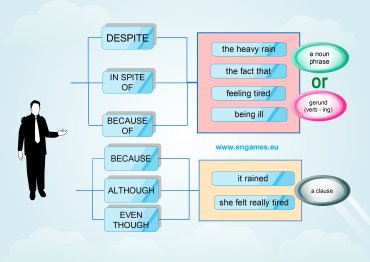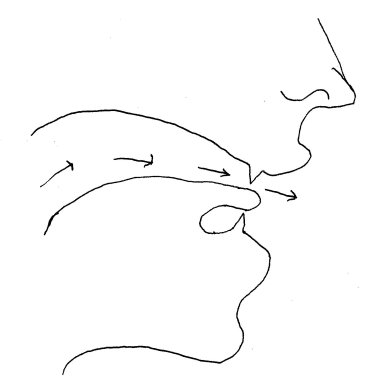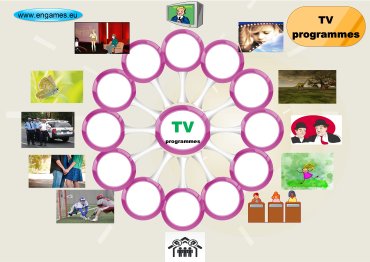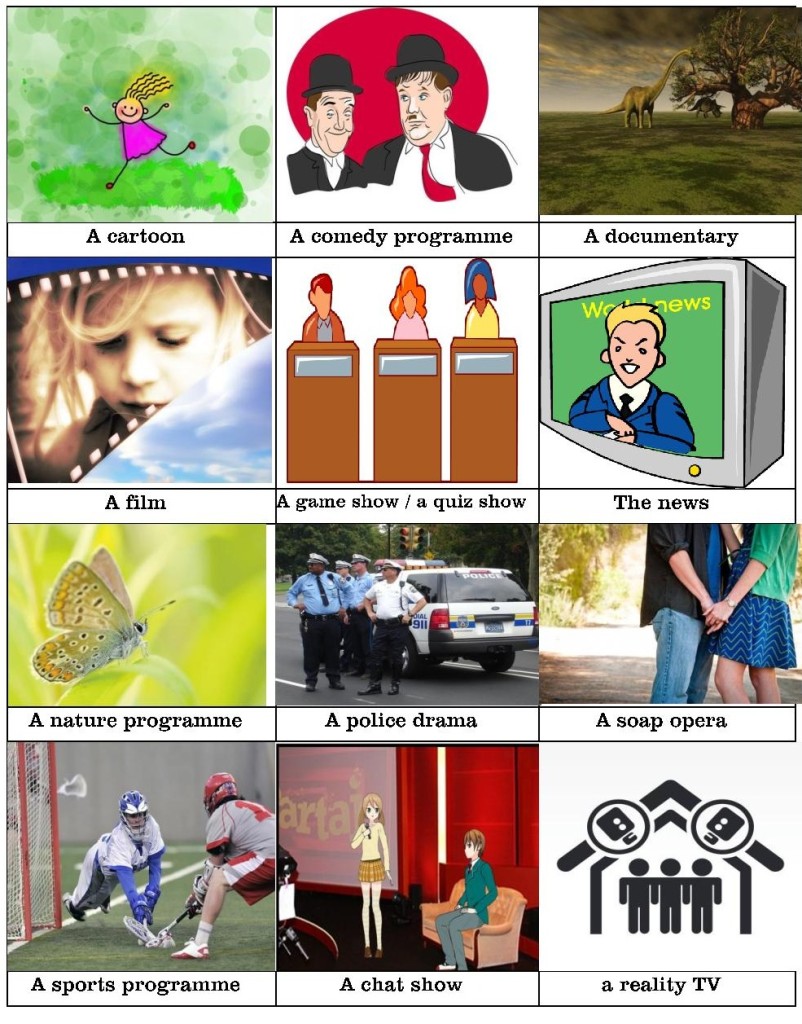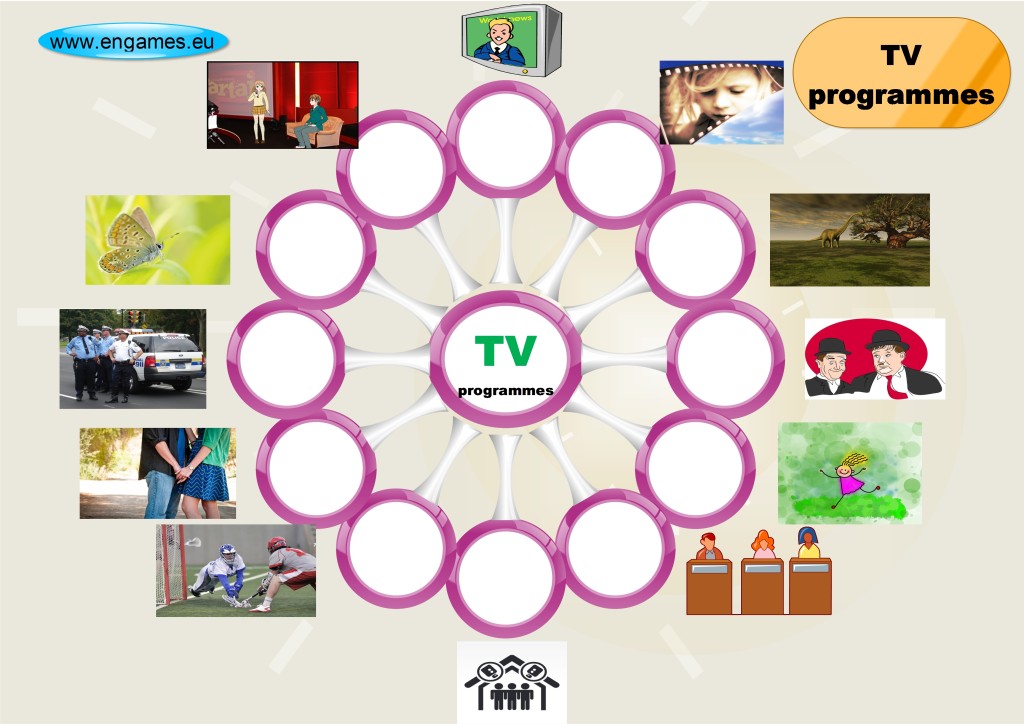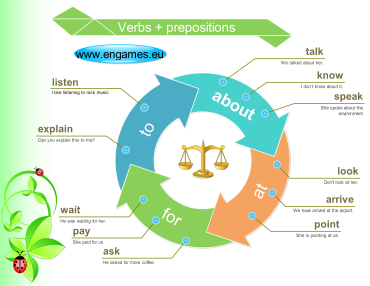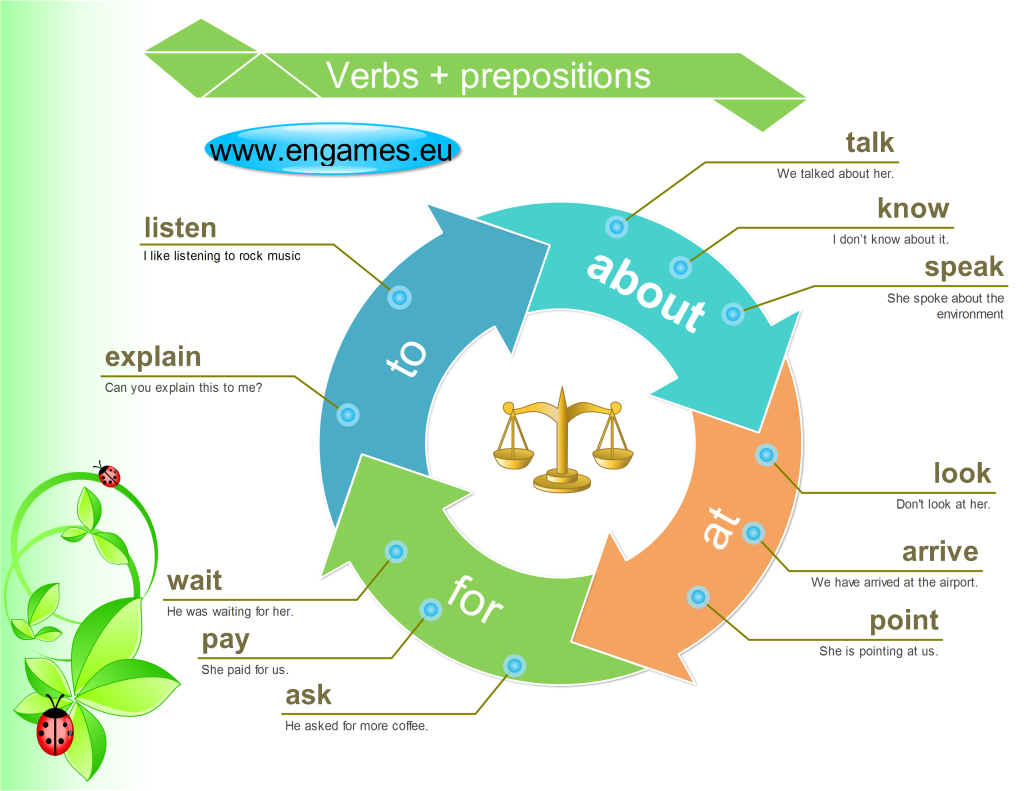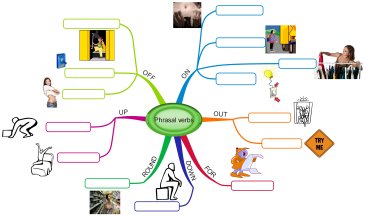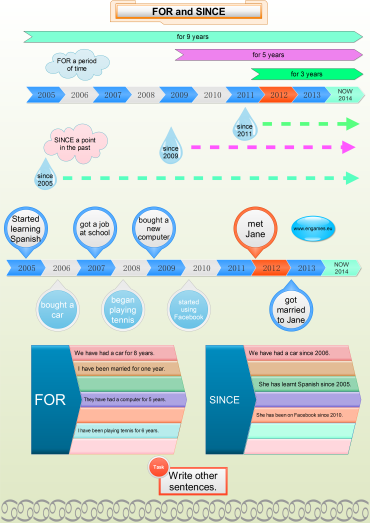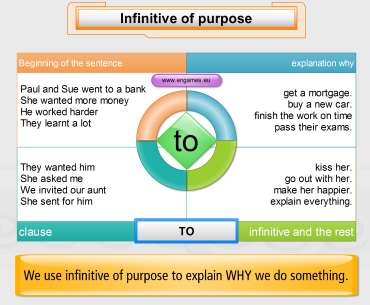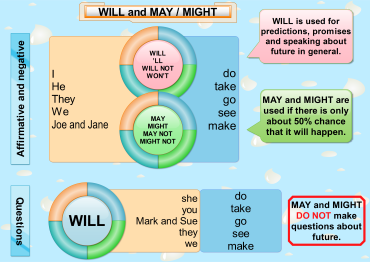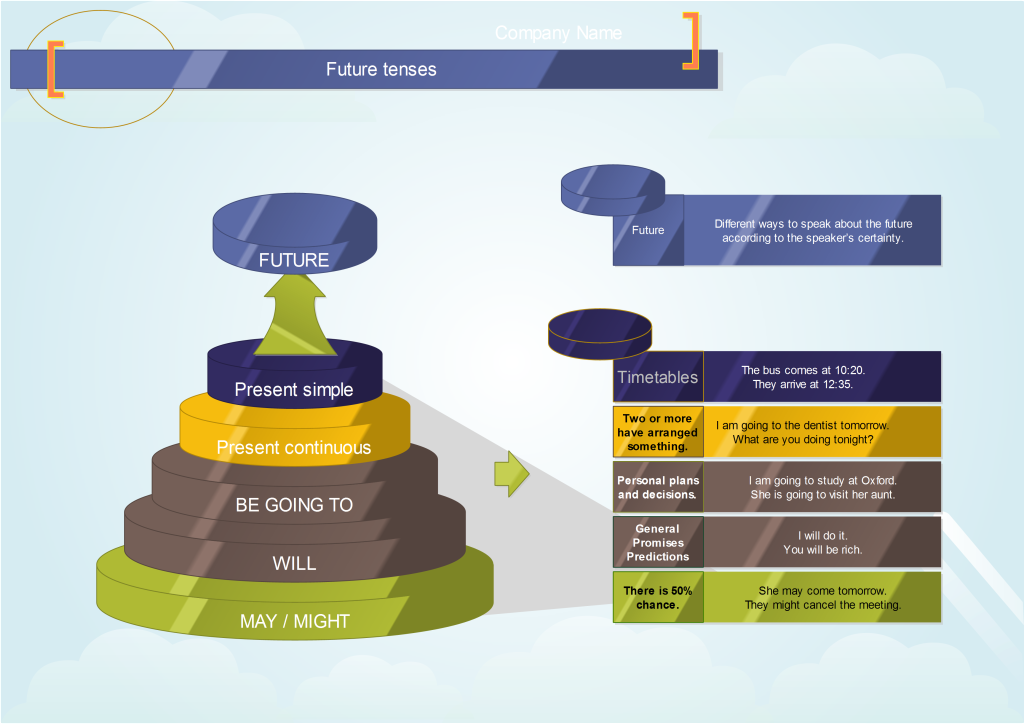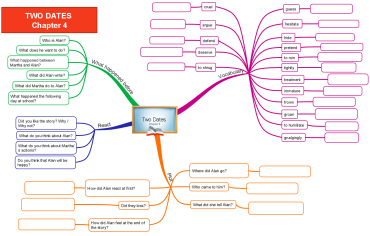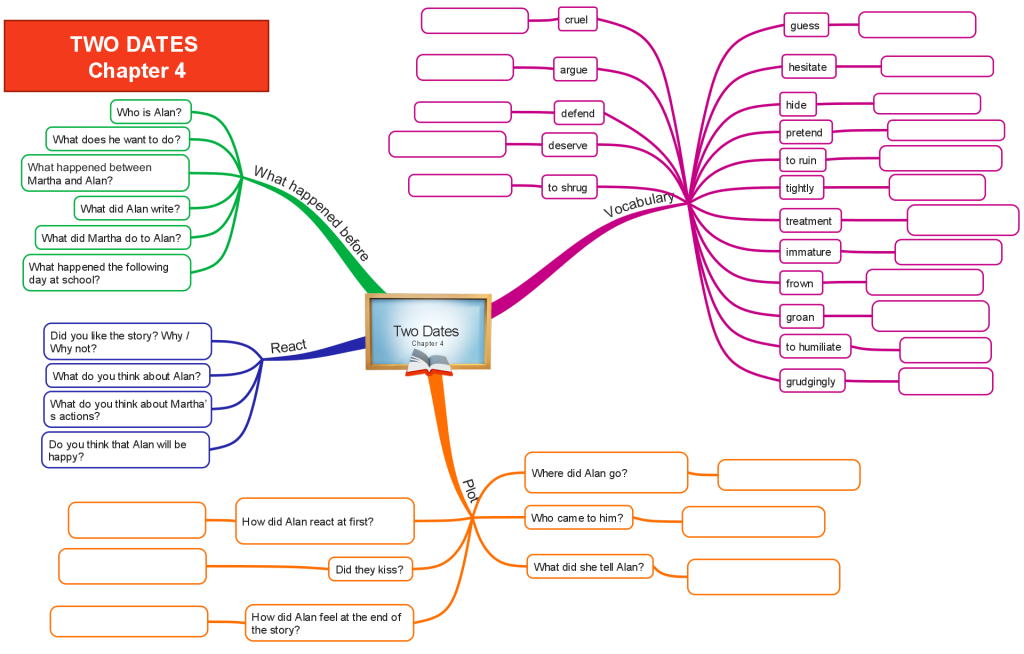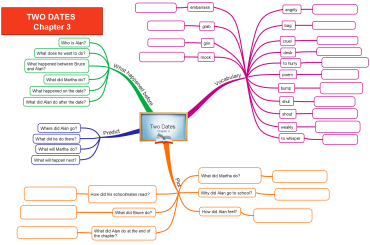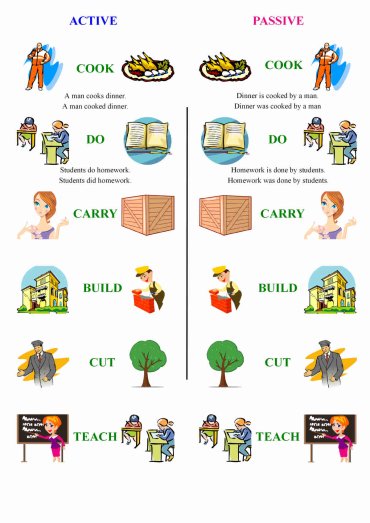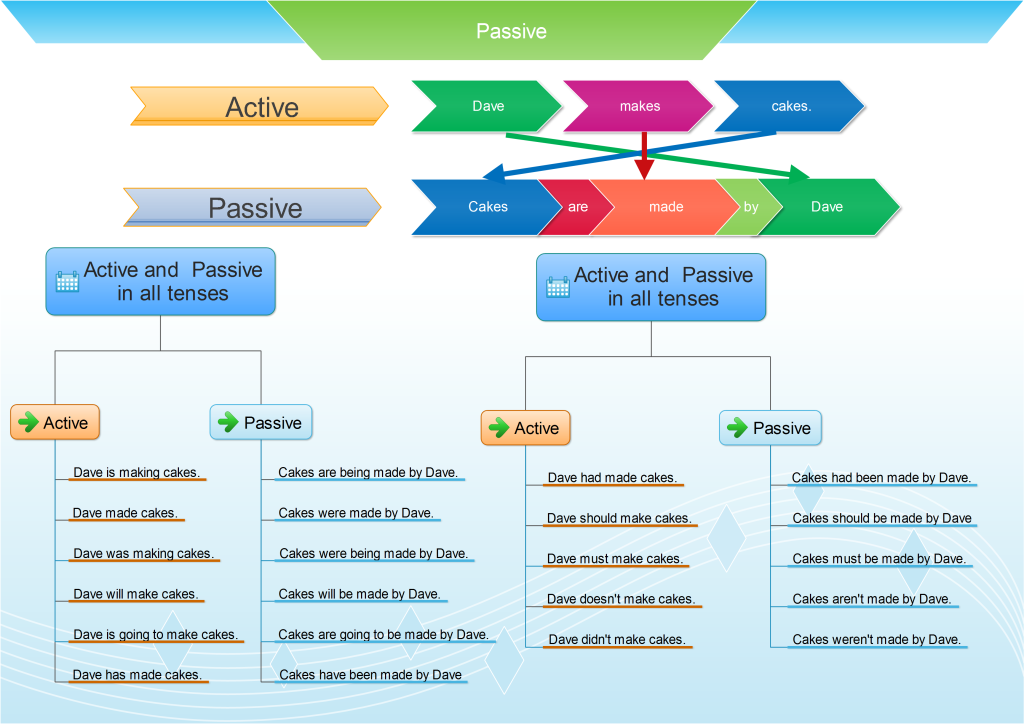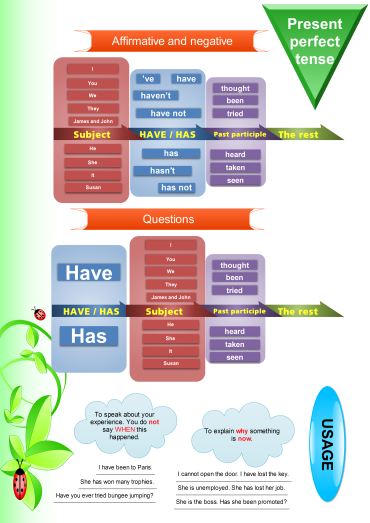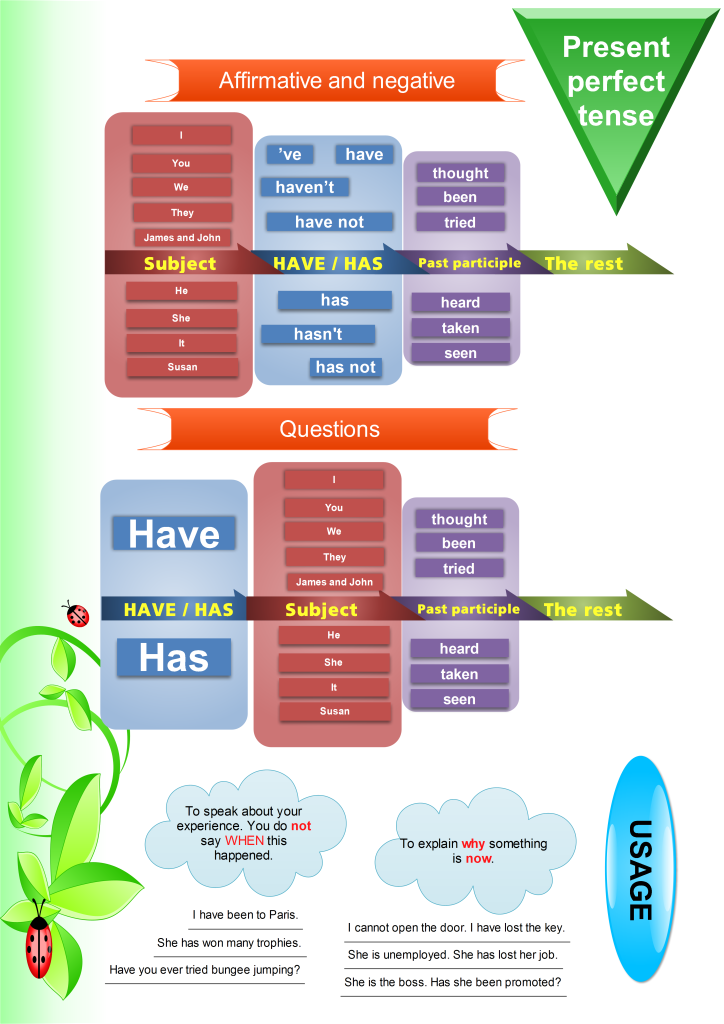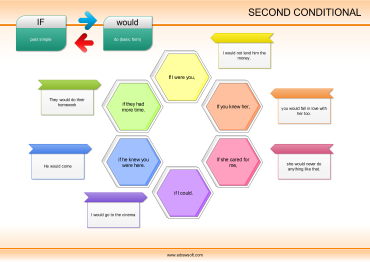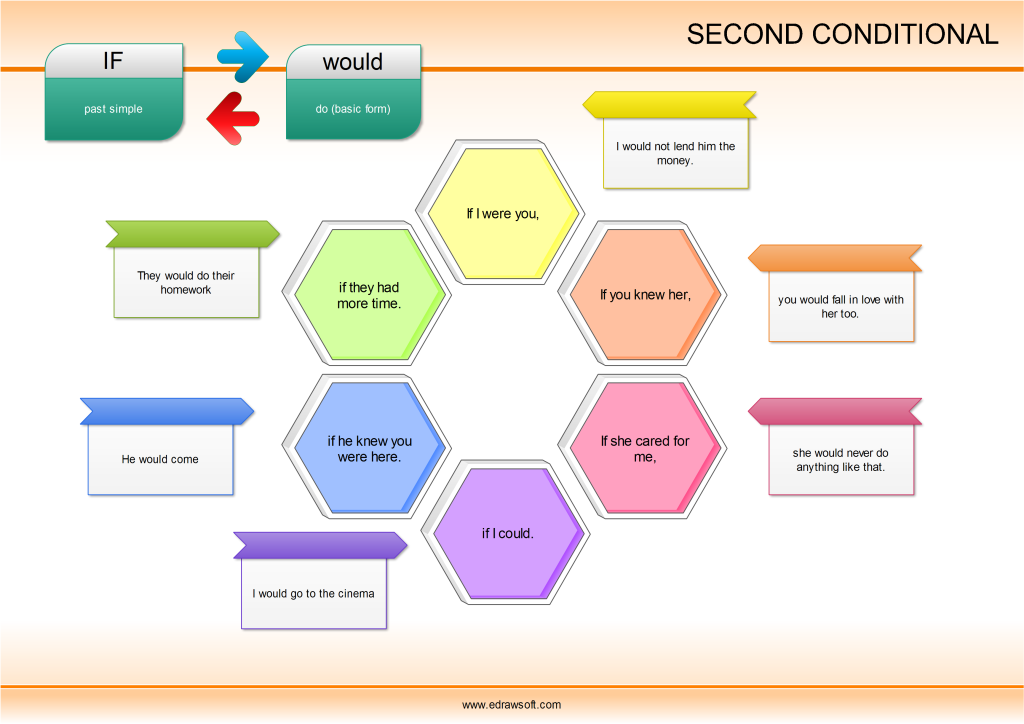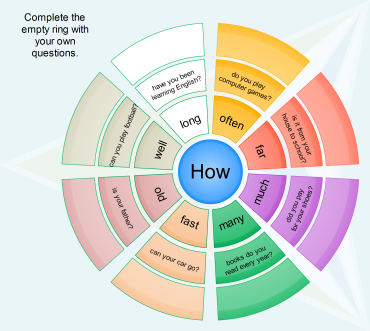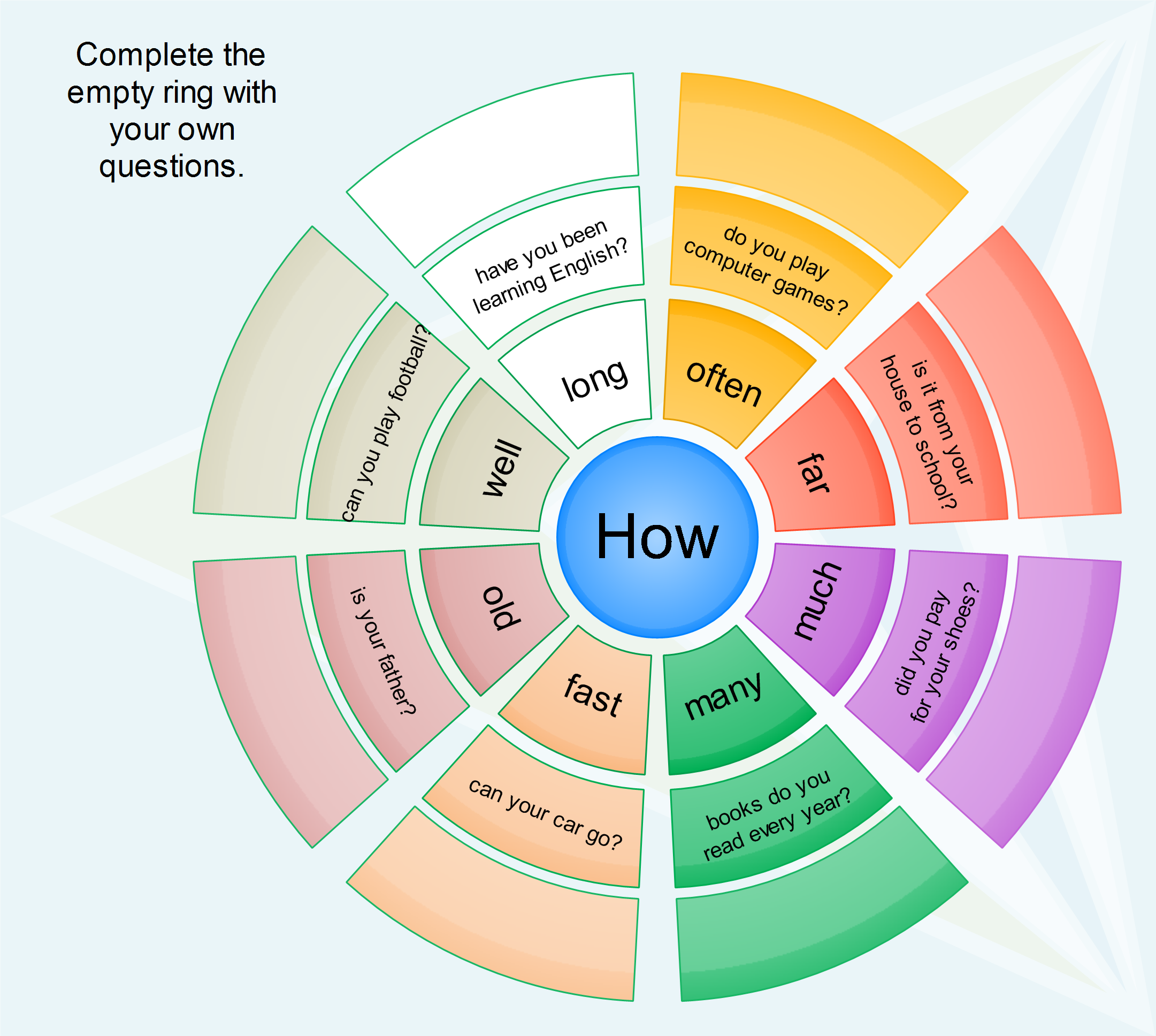For many learners of English the slight differences between the words BIG vs. LARGE and HIGH vs. TALL are very difficult to understand. In this post I will try to make the differences clearer and easy to remember. To achieve this, I have come up with two videos, two quizzes and two mind maps. I hope you will undestand the differences now.
ADVERT:
[showmyads]
Confusing words – High and Tall video
Once you have watched the video, try to complete the following mind map. Of course you can watch it several times if you need. Keep the completed mind map for your future reference.

Confusing words – BIG and LARGE video
The sound track comes from: http://www.bbc.co.uk/worldservice/learningenglish/radio/specials/1837_aae/page24.shtml
ADVERT:
[showmyads]
To watch it full screen, click on the following button:
BIG and LARGE – video explanation
Once again it would be ideal if you completed the following mind map to remember all the facts about the usage of the two words.

Confusing words – revision
If you want to see the quiz on the full screen, click the following button:
Confusing words – final quiz
In this post I would like to teach you how to use the words DESPITE, IN SPITE OF, ALTHOUGH, EVEN THOUGH, BECAUSE OF and BECAUSE correctly. I will explain the meaning of the words and the grammar. To help you with this there are two games, a mind map, a video explanation and a graphical explanation. I hope you will learn to use these conjunctions.
ADVERT:
[showmyads]
Conjunctions – meaning
The meaning of these conjunctions is clearly explained in the following graphics:
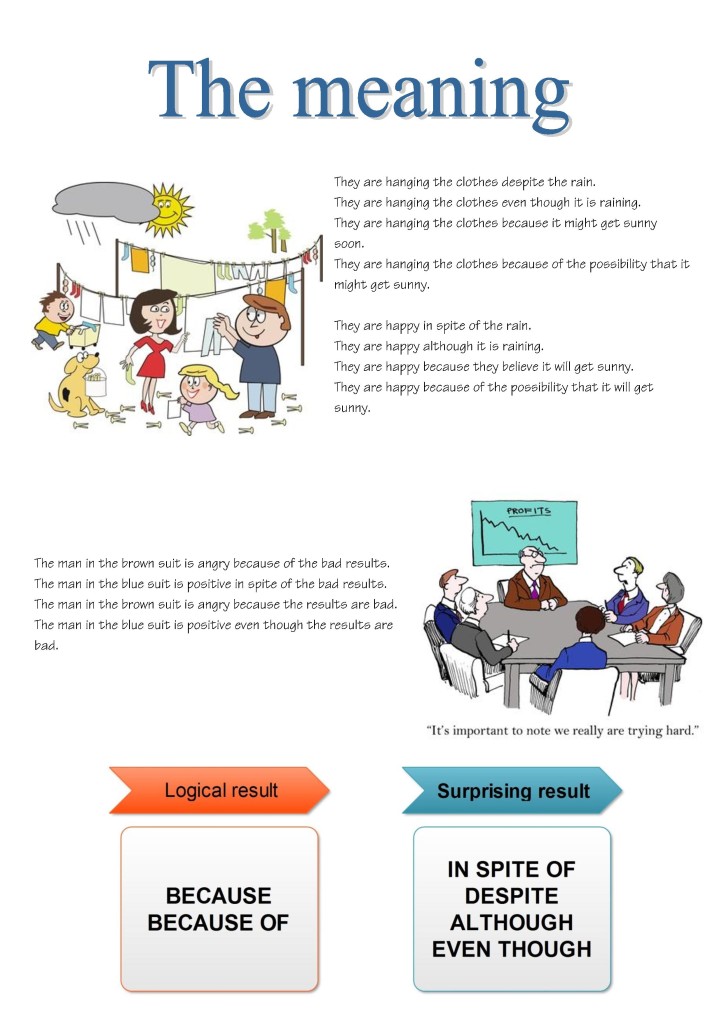
If you want to print out the graphic, you can download the pdf file below:
Conjunctions – the usage
You can see the explanation again in the following mind map:
To make it absolutely clear, here is an interactive video explaining the usage of the words BECAUSE and BECAUSE OF.
This video uses the free recording offered by BBC learning English at http://www.bbc.co.uk/worldservice/learningenglish/radio/specials/165_gramchallenge10/
To experience the video full screen click on the following button (as it is HTML5 video it will work on your mobile too):
BECAUSE – video explanation
ADVERT:
[showmyads]
Conjunctions – quizzes and games
The second quiz is fully in HTML5 so it will play on any mobile device you own. Your task is to connect both of the sentences into one and use the conjunction in the brackets. If you pass the test you will play the game called Math Pop and practise your Maths too.
Conjunctions – quiz and Math pop gameIf you do not know a sound, your brain filters it out when you hear someone using it. That is why it is crucial to teach sounds that do not exist in students’ mother tongue. Moreover, Adrian Tennant at www.onestopenglish.com claims that you should learn to hear and say the new sounds at the same time as the fact that you can produce the given sound makes it simpler for you to hear it. Ideal for this is the book Ship or Sheep. But the book is rather expensive and so you can try out similar exercises here which are free.
ADVERT:
[showmyads]
The aim of this post is to teach the pronunciation of the sound /θ/ which is the voiceless realisation of th. You can find here a video, a mind map and two difficult exercises to practise the voiceless th sound /θ/. Are you ready? So, let’s start.
Voiceless th sound – video
Voiceless th sound – mind map
ADVERT:
[showmyads]
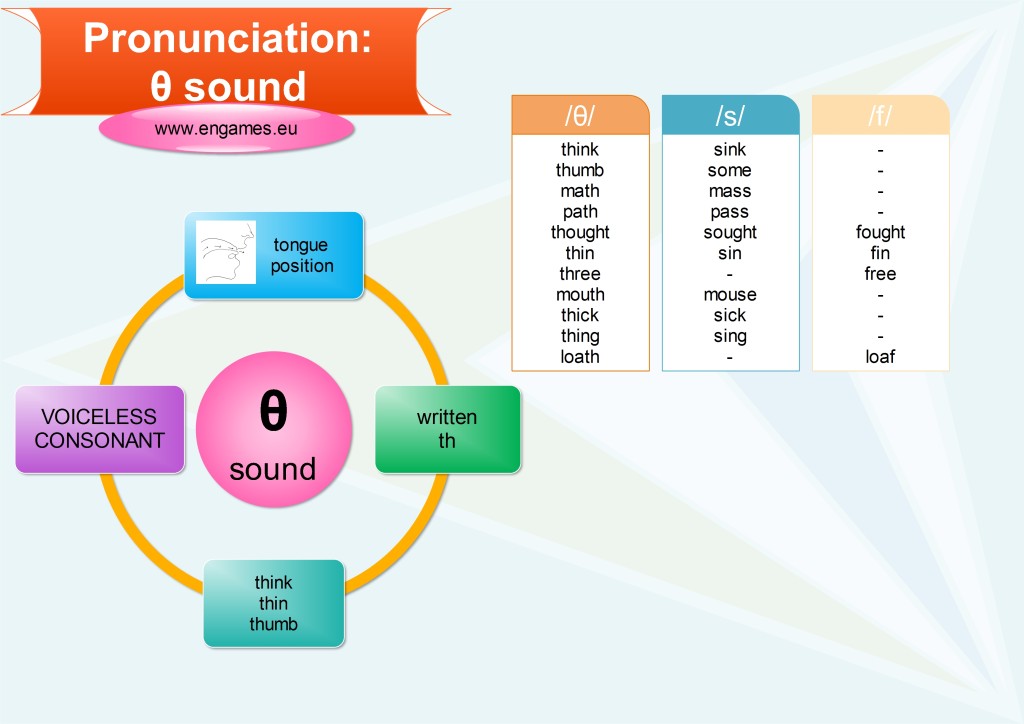
If you find the picture of the mouth showing the production of the TH sound too small here is the same picture again in a bigger size:
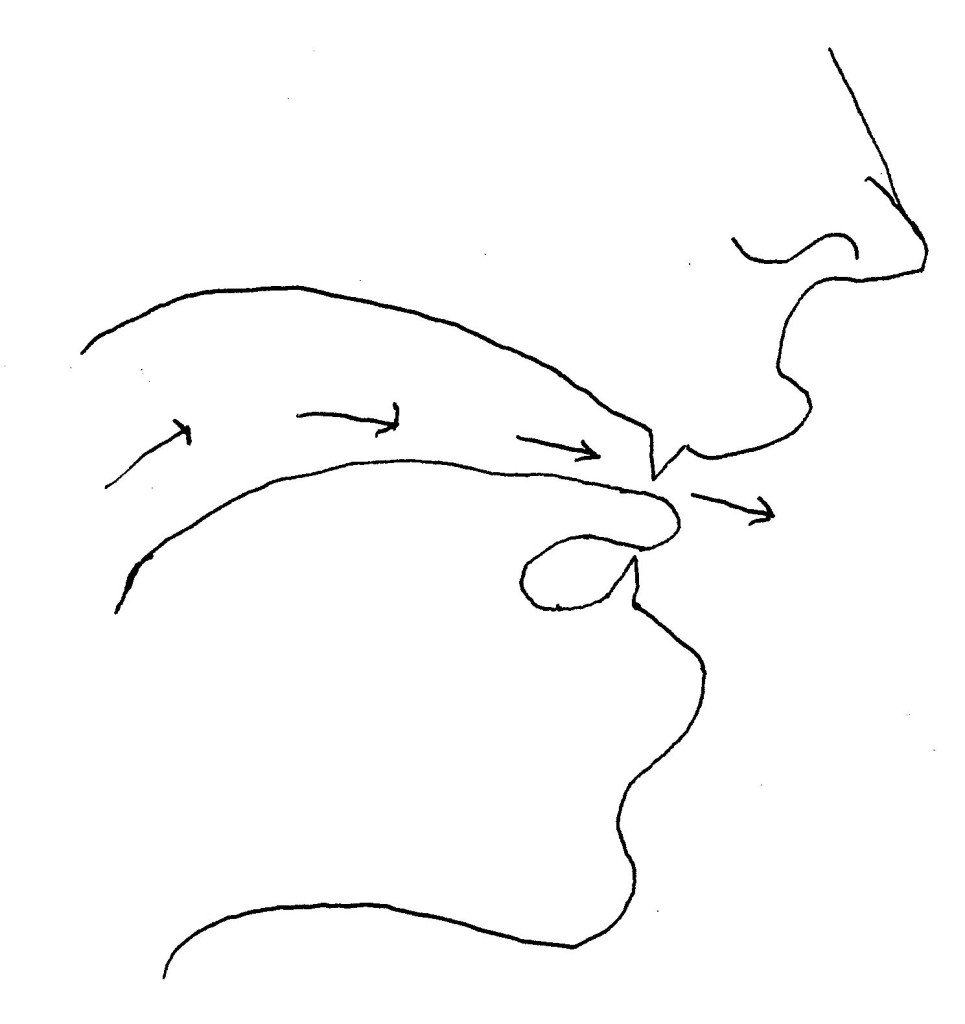
Voiceless th sound – games
The first game is a bit easier. First listen to the demonstration of the different sounds and then listen and complete the sentences with the correct words. If you pass the test you can play the game called Math Pop. But you have to pass the test first :-). Voiceless th sound – Math pop
The second game is slightly more difficult. You will hear five sentences each time and you have to decide which sequence you have heard. If you pass this test you can reward yourself with the game called Angry finches. Good luck.
Voiceless th sound – Angry FinchesHope, want and would like belong into the group of verbs which are followed by the infinitive. If you click the link above you can see a complete solution for these verbs for intermediate learners of English. In this post we would like to teach how to use only the three verbs HOPE, WANT and WOULD LIKE so it is suitable for elementary learners of English.
We are not going to explain the differences in meaning as these are very small and the best way about them is by consulting a bilingual dictionary. In this post we would like to deal with the grammar of these three verbs (they are followed by the infinitive with TO). There are two games, a mind map and a worksheet to practise or learn the given grammar point.
Verbs followed by TO infinitive – graphic
ADVERT:
[showmyads]

If you are a teacher, you can ask your students to use the mind map above and make as many sentences as they are capable of. Of course, they will have to add some words to start and finish the sentences.
The second graphic features three jokes which contain the target structures and then the students should write their own jokes using the structures given.
Verbs followed by TO infinitive – games
The second game is called Tic-Tac-Toe. Your task is to drag the words into the correct places and then win the game. Place the crosses into such places to have three in a row. There is just one way to win the game. Can you find it?
Verb patterns – tic tac toeRecently I published a post on TV programmes vocabulary. In this post I would like to add a few activities to help the teachers prepare a great lesson on this topic and to give students a few more activities to practise the vocabulary.
ADVERT:
[showmyads]
Unlike in the previous posts, there are several worksheets which you can print out and use. There is a song and a gap fill, a bingo worksheet and a worksheet with five more activities to practise the vocabulary connected with TV programmes. And of course there is a mind map to help you remember the new words better.
TV programmes – song
For this lesson, I am going to use the song Throw Away your Television by Red Hot Chilli Peppers.
Complete the lyrics:
I you need the lyrics for your classroom or a you simply prefer paper materials, here are two pdf files.
TV song_red hot chilli peppers
TV song red hot chilli peppers – key
At the end of the song I will elicit the topic of the lesson by the following questions:
What will be the lesson about?
What will we learn?
Once I get the topic of the lesson out of the students I move to the other part of the lesson.
TV programmes – Vocabulary presentation
If you do not like any of the materials above, all the new vocabulary is listed in the worksheets too.
TV programmes – Vocabulary practice
If you have already presented the students with the video and a mind map, start with the second exercise. Students should put the words into the correct form and complete the sentences. Once they complete them, discuss the questions in pairs and then as a whole class.
The other exercises are quite simple and quite fun. Ask the students to do as much as they can in 10 minutes. You can give them the answers at the end of the activity or you can check their answers.
Once we do the worksheets, I give my students a chance to use the new words creatively. Ask them to write 3-10 questions using the new words. Help the struggling students by giving them the simple example What sports programmes do you watch? and show them that they can create 12 questions by replacing the words sports programmes with other TV programmes vocabulary.
When the students write the questions give them a chance to ask you their questions. Answer the questions and at the same time you have a chance to correct the most striking mistakes.
After a while ask the students to discuss the questions in pairs.
ADVERT:
[showmyads]
At the end of the lesson I try to put a game. This time I have prepared the Bingo game for my students. Print out the following worksheet and cut it. Shuffle the cards and give each student one. Ask them to work in pairs and say the names of the TV programmes they have on their cards. They can ask you if they are not sure.
If you are sure that the students know all the words there are two options for you. You can either read the words yourself or I ask each student to say one of the words. Remember to state the winning combination before you start the game.
And that is the end of the lesson. If I count correctly, the lesson will take about 40 minutes.
Everyone watches TV sometimes. Thus, to be able to speak about what they watch students need some specialised vocabulary. The aim of the following post is to introduce and teach 13 names of TV programmes.
ADVERT:
[showmyads]
To achieve this, we have prepared the following activities: a video, a mind map, a pictionary and two games to practise the vocabulary you have learnt.
TV programmes – video
TV programmes – graphically
Once, you feel that you know all the necessary vocabulary, it is a good idea, to print out the following mind map and complete it with all the words you remember. Try to add the names of some real TV programmes you watch too. For example write a comedy programme to the picture of Laurel and Hardy and write there Friends, too.
TV programmes – games
The second game is going to play only on your desktop as it is in flash. The name of the game is Half a minute and your task is to unjumble the words. Good luck.
TV programmes – Half a minute gameMany verbs in English are often followed by the same preposition. Therefore it is best to learn them togehter from the beginning. However, even if you do this it is neccessary to sum it up from time to time.
ADVERT
[showmyads]The following summary was created for my elementary students of English and it contains the verbs they know which are often followed by the prepositions FOR, ABOUT, AT and TO.
In this post you can find a mind map and two games to practise the usage of the given preposition.
Prepositional pharses – mind map
The following mind map graphically shows the verbs which are used with the prepositions FOR, ABOUT, TO and AT.
Verbs and prepositions – games
Once you memorise all the verbs and prepositions that follow them you can try the following games. In the first game you should complete the sentences with the correct preposition. If you succeed you can play the game Highway Race. In this game you try to avoid all the cars on the highway. The best result has been 50,000 points. Can you do better?
The second game is a classic. It is called Teacher Invaders and your task is to shoot all the invaders before they destroy the whole planet. However, from time to time the game is interrupted and you have to complete a sentence with the correct preposition. Good luck.
More posts on prepositions
If you liked this post and you feel that you need to practise the prepositions more you might like the following posts on our site.
Do you think that we should create some more posts? Please leave a comment and we might do it.
Phrasal verbs make many students feel hopeless. Even advanced students struggle with them and to be honest, I am not very comfortable with them either. Moreover, they seem very hard to memorise.
That is why I have prepared the following post. There is a story where all the verbs are used. Thus you can see them in context.
ADVERT:
[showmyads]
Then you should read and listen to the story again and complete the mind map with the phrasal verbs from the story.
In the end you can practise the verbs in a quiz.
Phrasal verbs – story
Now answer the comprehension questions in the following game called On target. If you answer the questions correctly you should shoot as many bad ducks as possible. Don’t forget that you can get a bonus if you shoot any of the bottles on the walls. Phrasal verbs – game
Phrasal verbs – mind map
Games
More practice
The other post deals with phrasal verbs from a slightly different point of view. It is called Phrasal verbs separable or non-separable and it explains which phrasal verbs stick together and which can be separated.
For and since are often given as the key words which signal that present perfect tense should be used. It is not 100% true but it makes life easier for elementary and lower intermediate students.
However, sometimes it is difficult for learners to know which word they should use. The rule is simple. FOR is used when we give the length of the time (for three days) and since is used when we give the beginning of the time (since Monday). You can see the graphical explanation of this rule below.
ADVERT:
[showmyads]
In this post you can find an interactive video, where the grammar is explained and tested by the experts from BBC learning English.com, a mind map explaining the difference between FOR and SINCE graphically and a quiz with a game to practise the correct usage of the words For and SINCE.
FOR and SINCE – interactive video
For and SINCE – interactive video
FOR and SINCE – mind map
FOR and SINCE – games
FOR and SINCE – quiz
There are 22 items in this quiz. If you answer more than 60% of all the questions correct (that is not so difficult) you can play the game called Rock, Paper and Scissors. In this game you win if you give a Rock and your opponent scissors, you give a paper and your opponent gives rock and finally, you win if you give scissors and your opponent gives a paper.
SINCE and FOR – fling the teacher game
This game is slightly more difficult as you mustn’t make a mistake to win. You have to answer all the questions correctly to build the machine and fire your teacher 🙂 You can use up to three helps which are displayed on the screen.
This is one of the easiest grammar points for the Czech students because in their mother tongue there exists a structure which is similar to infinitive of purpose. Because of this, I am not going to spend too much time and energy on this grammar point.
Advert:
[showmyads]
There is just a mind map explaining and demonstrating the infinitive of purpose and a game where you can practise the grammar.
Infinitive of purpose – mind map
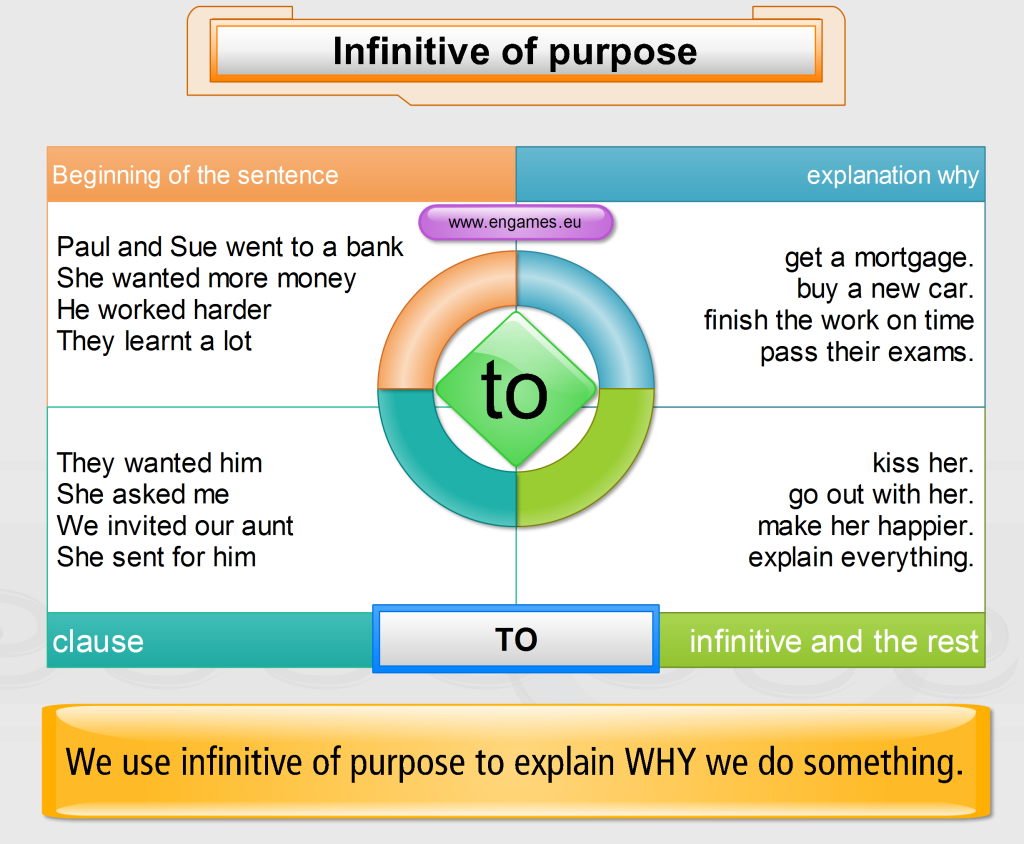
Infinitive of purpose – a game
In English there are many ways to speak about future and at the same time there are many grammarians who claim that there is nothing like a future tense in English. I do not want to discuss this issue here, I would only like to present two ways of speaking about future.
ADVERT:
[showmyads]
First I will introduce the basic system of future tenses in English according to the speaker’s certainty. The tenses presented at the bottom of the pyramid are the least certain to happen. The tenses at the top of the pyramid are the most certain.
MAY/MIGHT and WILL – mind map
MAY/MIGHT and WILL – GAMES
Will and Might – On Target In the second game you should choose the correct form again and score a basket. Good luck.
Will and Might – Hoop shoot
Category: Elementary, English games, Grammar
Here we go at last! This is the last chapter of the story Two Dates. Are you curious what will happen to Alan, Martha and Bruce. I hope that the ending of the story will surprise you at least a bit and that you will like it.
So, what are you waiting for? Start with the mind map and revive what happened in the previous parts of the story Two Dates. Then translate the vocabulary on the vocabulary branch. This time some of the words are pretty challenging. And once you know the new words start the story video.
In the end answer the comprehension questions in the mind map and discuss your opinions with a partner. Good luck and enjoy the story.
Two Dates – story mind map
Advert:
[showmyads]
Two Dates – the story
Two Dates – games
If you are using a mobile phone or an iPad you might be interested in another HTML5 game, you can go to Two Dates Chapter 3 where there is the memory game in HTML5.
The last game is in Flash and it is called Half a minute. Your task is to unjumble the words in 30 seconds. Good luck 🙂
If you prefer reading the story, here is the text of the fourth chapter:
Two Dates – chapter 4 story
Alan decided to hide out in the library where it was quiet, and he knew most people would not be able to find him. He knew he was not a bad kid. True, he might not have the best qualities, or he might not be the best student, but he knew he was a pretty nice guy. He loved animals, and he loved helping people out. He did not deserve such a cruel treatment, so why were they so mean to him?
The sound of footsteps coming up towards him made Alan look up. Susan stood in front of him, with her arms across her chest.
Alan frowned. “What do you want from me?” he said rudely. “Haven’t you guys had enough?”
The look on Susan’s face softened. “I did not laugh at you Alan. That was mean of Martha.” She smiled gently at him and asked him if she could sit next to him. Alan grudgingly agreed. He was wary. Susan could pretend to be nice and then humiliate him again in front of the whole class just like Martha had.
“Why did she do that?” Alan asked Susan. “What did I do wrong?”
Susan shrugged. “Kids do stupid things. Kids can be mean. Martha is just being immature. Forget about her.”
Alan groaned and hid his face into his hands. “I’ll just switch schools. I can never go back to class again.”
Susan hit Alan lightly on the hand. “You can’t give up just like that!”
Alan sighed. “You don’t understand! Everyone laughs at me. I’ll never be able to go to the dance. I’ll be at home alone again, this year.”
Susan smiled, a little shyly. “Guess what,” she said. Alan looked at her. Susan was beautiful too, in a different way. She had a kind face, and a very sweet smile. “I could be your date for the dance.”
Alan stared at her in shock. After a while, he started laughing. “I won’t fall for that again. You’ll humiliate me too, like Martha did.”
Susan rolled her eyes. “Sure Alan. I skipped class, argued with Bruce in front of the whole class, let Martha yell at me too, defended you and looked for you all over the school, just so that I could humiliate you.”
Susan smiled at him. “C’mon, you can’t let bullies ruin your day. Chin up! The day isn’t over. So will you come to the dance with me?”
Alan hesitated for just a moment, enough for Susan to say, “What? Do you think Martha is prettier than me? Is that why you don’t want to come with me?”
“No!” Alan protested, and before he could even think, he grabbed Susan’s hand tightly. “I will come with you,” Susan smiled and kissed him lightly on his lips.
“See you in the class,” she said and walked away.
Alan smiled.
It was going to be a very different year indeed.
Have you been wondering what the big shock for Alan was? The story continues here. Once again you can learn 16 new words and practise them in a game. Then you can check your comprehension with a mind map which once again serves as a worksheet too.
The next chapter of the story Two Dates will be the last one, so do not miss it. It will be published on Wednesday 2nd April 2014.
If you have missed the previous chapters of this story for teenagers, you can find Chapter 1 here and Chapter 2 here.
Two Dates – a mind map
ADVERT:
[showmyads]
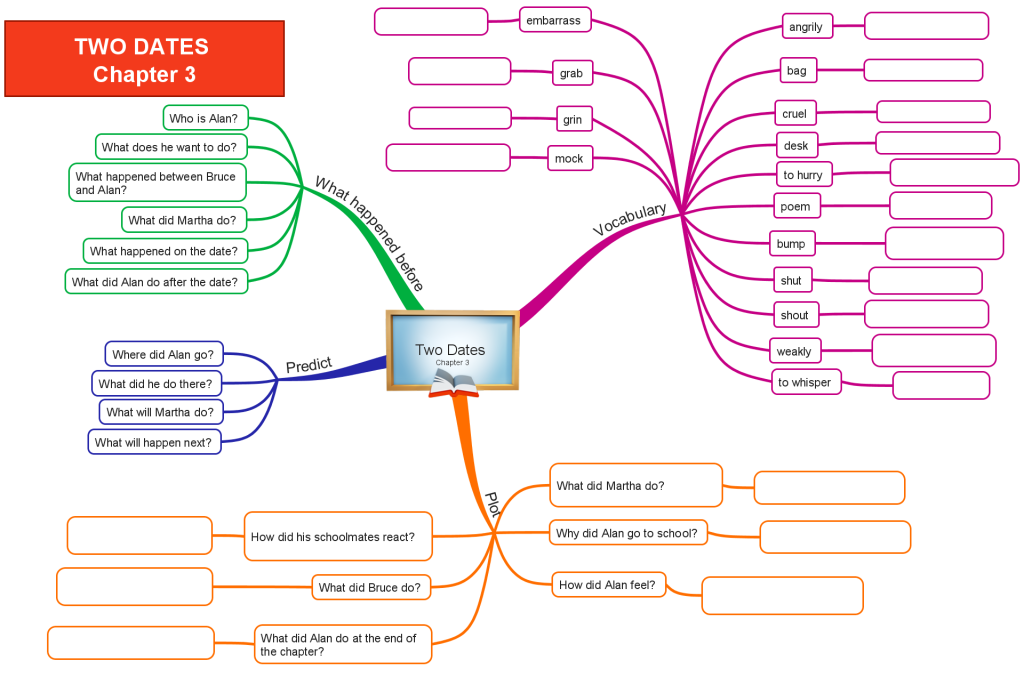
I hope you like the story and that you will come back for the last chapter of Two Dates.
Once you know all the words it is time to go to the next section.
Two Dates – a video
Two Dates – a game
The first chapter of the story Two Dates proved to be quite popular. The story will have 4 chapters in all. Here is the second one.
Two Dates – Mind map
ADVERT:
[showmyads]
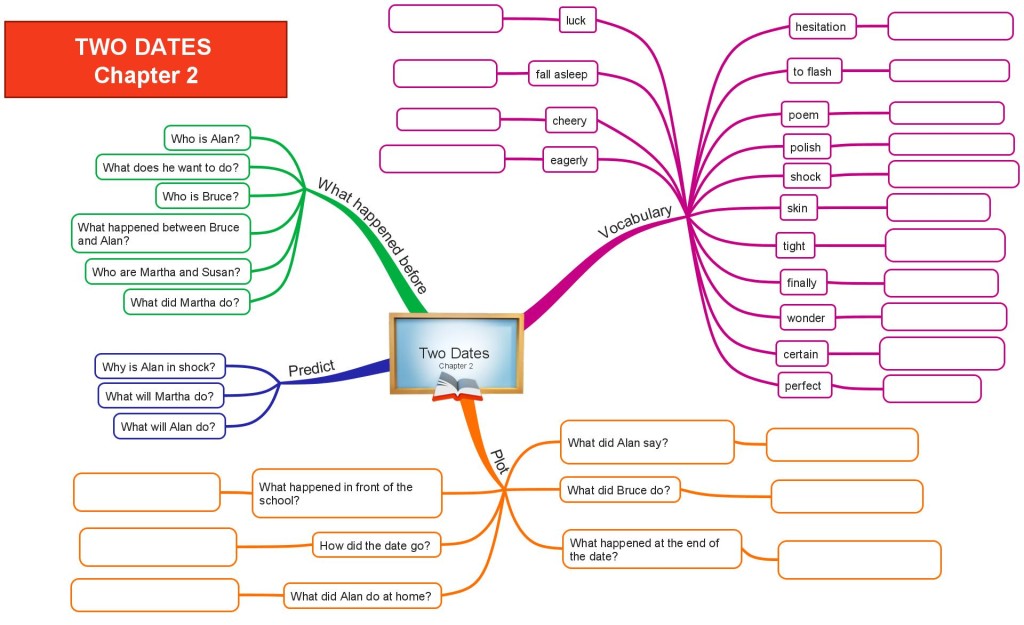
Two Dates – games
The second game is called Half a minute and your task is to put the words into the correct order in half a minute. By playing these games you should learn the vocabulary from the story Two Dates. Enjoy:
Click Here to play the game – Two Dates – Half a minuteTwo Dates – video
Two Dates – story
“Y…yes of course!” He smiled shyly at Martha.
“Great!” Martha flashed another one of her perfect smiles and turned around, returning back to her seat beside Susan. Susan looked back at Alan and smiled, waving at him.
He waved back. He could not believe his luck!
Bruce saw the whole exchange and left Alan alone.
Alan waited nervously for Martha after school, by the gates. He kept a look out for her, and scanned the crowd for a pretty girl in a yellow floral dress. To his surprise, Martha met him in a completely different outfit. She must have changed before meeting him. Yet again, she showed off her perfect figure in skin-tight jeans and a white t-shirt.
“Ready?” Martha held out her hand, waiting for Alan to take it.
He took it without a moment’s hesitation.
They spent the afternoon at the ice cream shop in town. Martha wanted Alan to buy her ice cream, which he did. He did not have much money on him that day, only enough for a single ice cream cone, so he let Martha have it. He watched her polishing off the chocolate-flavored ice cream.
“Alan, how can you not have money with you?” Martha asked surprised and shocked. She rolled her eyes as she took another lick off her ice cream.
Alan blushed. He was not expecting to go out at all, so of course he did not have much money on him.
“That’s okay, I’m not hungry,” he told Martha, watching her eat.
“Okay,” said Martha.
After their ice cream date, Alan walked her home. She did not bother saying goodbye as she walked into the driveway of her house, but Alan waved anyway. He was in love.
He could not stop thinking about her even at home. Alan decided to write Martha a poem. Running eagerly to his computer, he started the word processor and typed.
I never knew about happiness;
I didn’t think dreams
came true;
I couldn’t believe in love,
Until I finally met you.
Alan decided to send it to Martha’s email.
He fell asleep with a bright smile on his face, feeling certain that his fortune had changed at last…
Alan woke up the next morning, happy and cheery that that morning would be the first day to a whole new different Alan. He wondered if Martha had seen his email yet.
When he turned on his computer, he had the biggest shock of his life.
This morning I was preparing a presentation for one of my classes on separable and not separable phrasal verbs and suddenly an interesting pattern appeared. It seems that the fact that the particle is separable can be guessed according to the particle that is used. I am not sure whether it works all the time, but it certainly worked for all the phrasal verbs I had to cover with my lower intermediate class.
The rule is quite simple: If the phrasal verb is transitive, it is not separable if there are two particles or the particles AFTER and WITH are used. If there are other particles, the phrasal verbs are separable.
It might seem really complicated but if you have a look at the mind map bellow, it is quite easy.
Phrasal verbs – mind map
[showmyads]
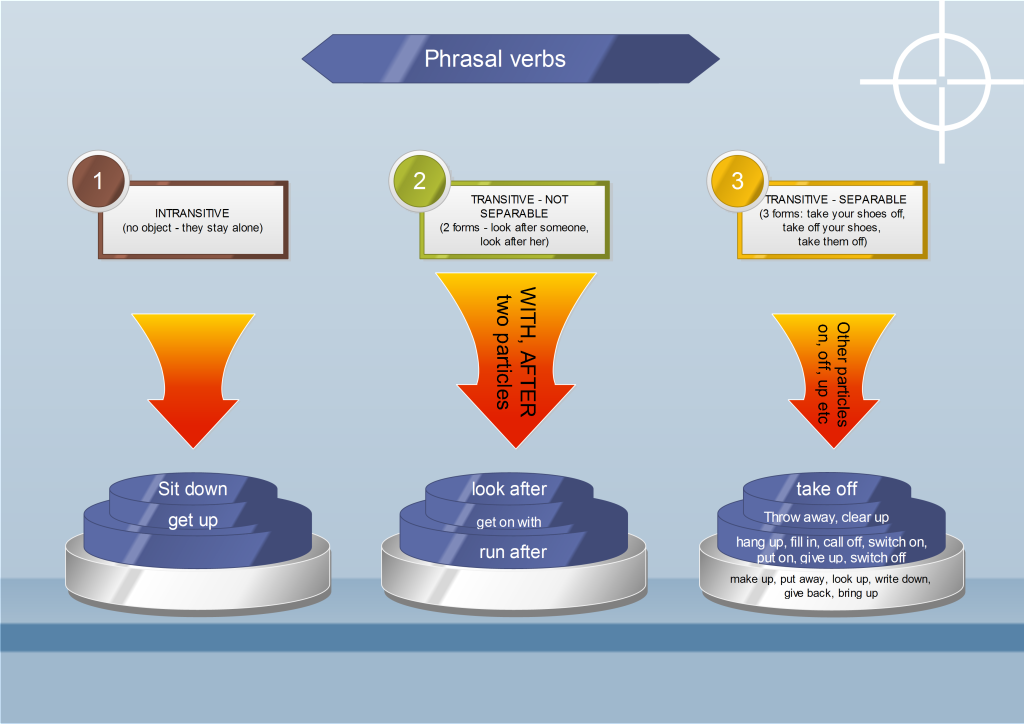
Phrasal verbs – games
The first game is called Darts. Your task is to choose a correct (or incorrect) option and click on it at the moment you think that you will get most points. Click Here to play the game – Phrasal verbs – Darts
The second game is called On target. Once again, your task is to choose the correct or incorrect option and then shoot as many bad ducks as you can.
Click Here to play the game – Phrasal verbs – on TargetPhrasal verbs – Conclusion
Please, let us know what you think about this new rule.
To learn Passive voice it is necessary to know the past participles. If you do not know the past participles go to our post on Past participle and learn the irregular verbs first. Once you do not have any problems with past participles, it is time to learn the Passive voice in English.
Passive voice is used if the subject (the thing before the verb) does not do the action described by the verb. Then you have to insert the verb “TO BE” in the correct form in front of the verb in past participle.
Passive – graphical presentation
ADVERTISEMENT:
[showmyads]
The second graphic clearly shows the usage of passive voice: Your task is to write two sentences under each picture using present simple tense and past simple. The sentences in the first column should be in active voice and the sentences in the second column should be in passive voice.
Passive – games
The first game is a simple online quiz. Try to fill in the verbs in the correct form.
The second game is called Hoop shoot. Once again, choose the correct form and then stop the sliders in the center.
Click Here to play the game – Passive Hoop Shoot
Some time ago I presented here an infographics on present perfect tense. This infographic contains a lot of interesting information but when I tried to teach the present perfect tense using it, I found out that I failed. That is why I have prepared this new one where I try to introduce the form and the basic usage of the present perfect tense.
To teach the grammar successfully though the students have to know the past participles. You can learn present past participles here. There is mind map and three games to learn 40 of them.
Present perfect tense – mindmap
This mind map shows the form of present perfect tense and the basic usage.
Advert:
[showmyads]
Present perfect tense – RAP
We have used a rap before to explain the grammar. You can see the explanation of the present simple and present continuous tenses here and the rap presentation of past participles here.
Play this rap after reading the graphics above and it should help you memorise the form and the usage of the grammar.
Present perfect tense – practise
And now it is time to practise the grammar. Try the following video. Watch and use the words on the screen to make a sentence in the present perfect tense.
You can play other games for example here in our post Present perfect basic.
Conclusion
I hope this post helped you understand the usage and form of the present perfect tense better. You can find more grammar posts on our blog. For example, there is a post on Second conditional or creation of questions starting with HOW. Enjoy.
Several weeks ago I published a post on Conditionals. In the post, I tried to cover all the conditionals in one mind map and I think that I succeeded.
However, the post was unnecessarily complicated for lower level students. Therefore I created a simpler one for lower intermediate students who need to know only the second conditional. Here you can see the result.
Second conditional – mind map
The mind map very simply depicts the form and usage of the second conditional.
ADVERTISEMENT:
[showmyads]
Last week I taught passive and present perfect tense. I thought that I was well prepared but in both cases we encountered one big problem. The students could not form the past participles correctly. So they fought with the past participles and completely ignored the grammar taught.
ADVERTISEMENT:
[showmyads]
So now I know that we have to deal with past participles before we return to the two grammatical points again. That is why I have prepared this post. Here the students can learn and practise the past participles of 40 irregular verbs. It is not a full list but, it is better than nothing. There is a rap to start the lesson, there is a mind map and several games to practise the verbs. I hope you will find these useful too.
Past participles – RAP
Watch and follow the video. You can sing along if you dare.
Past participles – mind map
Here I try to track some regularities in forming the past participles in English. These rules are based on the pronunciation.
- Past participles are not as difficult as they seem.
Past participles – GAMES
In this section of the post you can practise the 40 past participles in different games. First of them is called Fling the Teacher and your task is to choose the correct past participle. If you get all 15 questions correct your teacher will be fired. Good luck.
ADVERTISEMENT:
[showmyads]
The second game is called En Garde. Your task is to choose the correct past participle and then hit your opponent. Kill him sooner than he does the same to you.
The third game has already been presented on our site. It is called Teacher invaders and your task it to kill all the invaders and write the past participles of the verbs displayed. Enjoy.
The word “HOW” is one of the most productive words in English. It helps us create meaningful questions and sentences. The word “HOW” combines with many other words to create these questions.
In this post I try to introduce the basic phrases “How much”, “How many”, “How often”, “How well”, “How long”, “How far” and “How old”.
How in questions – mindmap
Here the students can practise the basic usage of the word HOW in questions. First, they should create their own questions and later they can cover the inner rings and say the correct phrases.
ADVERT:
[showmyads]
How in questions – games
In the first game your task is to complete the questions with the correct word. Moreover, you should shoot all the invaders and save the Earth 🙂
In the second game you should choose the correct answer and shoot only the BAD ducks. You can try to shoot one of the bottles too and get a bonus.
I hope that by now you know all the basic usages of the word HOW.

